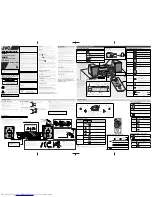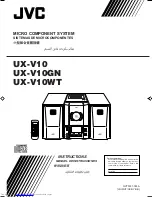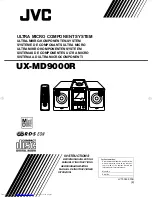
Equalizer Installation and Administration Guide
105
C
Regular Expression Format
The Equalizer Match Rules can be specified using IEEE Std 1003.2 (``POSIX.2'') regular
expressions. Regular expressions are not case sensitive.
A regular expression (RE) is one or more non-empty branches, separated by
|
. An
expression matches anything that matches one of the branches.
A branch consists of one or more concatenated pieces. A branch matches a match for the
first piece, followed by a match for the second, etc.
A piece is an atom that can be followed by a single *, +, or ?, or by a bound. An atom
followed by an asterisk matches a sequence of 0 or more matches of the atom. An atom
followed by a plus sign matches a sequence of 1 or more matches of the atom. An atom
followed by a question mark matches a sequence of 0 or 1 matches of the atom.
A bound consists of an open curly brace ( { ) followed by an unsigned decimal integer. The
first unsigned decimal integer can be followed by a comma, or a comma and a second
unsigned decimal integer.The bound is closed by a close curly brace ( } ). The integers must
lie between 0 and 255 inclusive, and if there are two of them, the first may not exceed the
second.
An atom followed by a bound that contains one integer i and no comma matches a
sequence of exactly i matches of the atom. An atom followed by a bound that contains one
integer i and a comma matches a sequence of i or more matches of the atom. An atom
followed by a bound containing two integers i and j matches a sequence of i through j
(inclusive) matches of the atom.
An atom can consist of any of the following:
■
A regular expression enclosed in parentheses, which matches a match for the regular
expression
■
An empty set of parentheses, which matches the null string
■
A bracket expression
■
A period (.), which matches any single character
■
A carat (^), which matches the null string at the beginning of a line
■
A dollar sign ($), which matches the null string at the end of a line
■
A backward slash (\) followed by one of the following characters: ^.[$()|*+?{\,
which matches that character taken as an ordinary character
■
A backward slash (\) followed by any other character, which matches that character
taken as an ordinary character (as if the \ had not been present)
■
A single character with no other significance, which simply matches that character.
An open curly brace followed by a character other than a digit is an ordinary character, not
the beginning of a bound. It is illegal to end an RE with a backslash (\).
Summary of Contents for Equalizer
Page 2: ......
Page 4: ...iv Coyote Point Systems Inc ...
Page 32: ...Chapter 2 Installing Equalizer 22 Equalizer Installation and Administration Guide ...
Page 42: ...Chapter 3 Configuring Equalizer 32 Equalizer Installation and Administration Guide ...
Page 108: ...Chapter 7 Troubleshooting 98 Equalizer Installation and Administration Guide ...
Page 114: ...Appendix B Using Reserved IP Addresses 104 Equalizer Installation and Administration Guide ...
Page 118: ...Appendix C Regular Expression Format 108 Equalizer Installation and Administration Guide ...
Page 130: ...Appendix E Technical Specifications 120 Equalizer Installation and Administration Guide ...
Page 136: ...Appendix F License and Warranty 126 Equalizer Installation and Administration Guide ...
















































